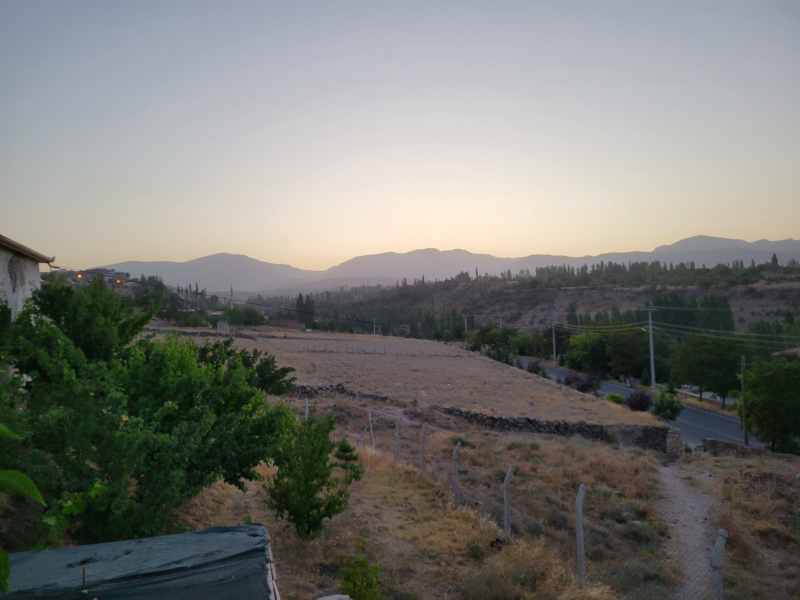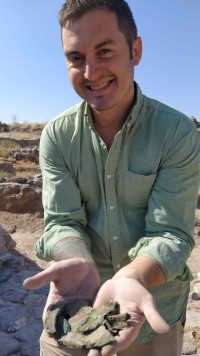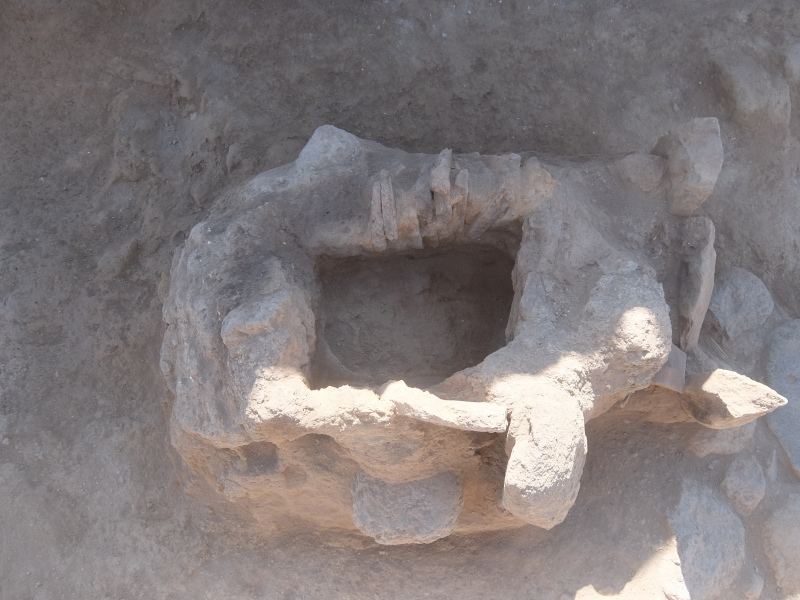
Kınık Höyük 2022: Short but Sweet
This year, thanks to the generosity of Charles Steinmetz and the help of ASOR, I was able to return to the excavations at Kınık Höyük in Niğde province, Turkey after two years missed due to the pandemic and the birth of my first child. Unfortunately, this season was also shortened by delays in acquiring our excavation permit and research visas, but even so, it was wonderful to be back on the site and at the dig house, and back with friends and colleagues that I hadn’t seen in such a long time. Not to mention, back to such a wonderful morning view before heading to the field.
My work this year focused on continued excavations in a Late Iron Age room (ca. 7th-6th c. BCE), which I began to expose in 2017. This entailed excavating a Late Hellenistic occupation layer and Achaemenid period deposits – about two meters of earth – before secure Iron Age contexts were reached. While most of these intervening layers lack a well-defined context, they did produce several interesting finds. One such discovery was a crushed and fragmentary, but mostly complete, bronze bowl found resting on a loosely structured external surface of beaten earth. The bowl awaits restoration to allow for further analysis, but we were quite happy for the discovery in the field.
As for the Late Iron Age room itself, we opened a southern extension of the previously excavated space hoping to better understand its connection with adjacent rooms. The space is particularly interesting in its final phase of use (or perhaps disuse?), when it served as the locus for a midden heap rich in anthropic materials – the collection of these materials has become even more urgent in the last year, as the robust ceramic assemblage is now the focus of PhD research of a colleague at the University of Pavia, Italy. Additionally noteworthy are the peculiar faunal assemblage suggestive of ritual activity in the vicinity – presented at ASOR 2021 – and the recent identification of bone horse bridles, of which we have three – so at least definitely more than a single pair! The new materials collected this year require further analysis before any conclusions can be made, but from impressions made in the field, they appear consistent with past discoveries. One entirely new discovery from the room in the same period as the midden heap was a well-structured oven composed of stones, mud-bricks, and large ceramic sherds – apparently debris collected for reuse. The chamber of the oven sloped downwards to allow for heating without direct exposure to the fire, and the innermost part of the chamber was entirely full of burnt ashy remains of the fuel used for cooking.
In all, the season felt way too short, but we all made the best of the time we had. Materials still need to be studied, and more excavations will be needed next year, but the campaign still feels like a success. And in the end, even if we hadn’t been able to put a single trowel to the earth, the renewed collegiality and rekindled friendships with scholars and students from across the globe would have made the short season worth every effort anyway. Thanks again to ASOR, Charles Steinmetz, and the Universities of New York, Pavia, and Florence for facilitating my research and participation in the excavations of Kınık Höyük this year.
Nathan Lovejoy is in the final year of his PhD at the Institute for the Study of the Ancient World at New York University, where he is writing a dissertation on institutional change and identity maintenance in the northeast Mediterranean during the Iron Age. He is a US Army veteran, a father to his amazing son Arthur, and husband to his ever-supportive wife Maggie.
American Society of Overseas Research
The James F. Strange Center
209 Commerce Street
Alexandria, VA 22314
E-mail: info@asor.org
© 2023 ASOR
All rights reserved.
Images licensed under a Creative Commons Attribution-NonCommercial-ShareAlike 4.0 International License
COVID-19 Update: Please consider making payments or gifts on our secure Online Portal. Please e-mail info@asor.org if you have questions or need help.



